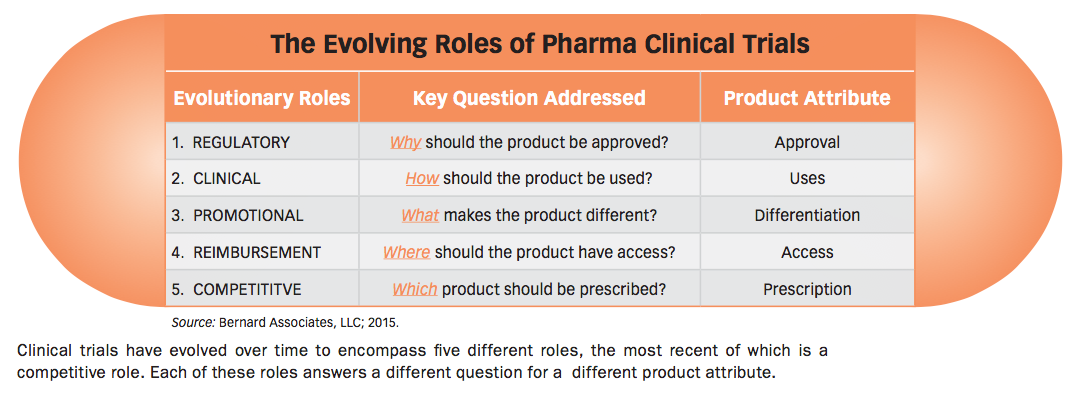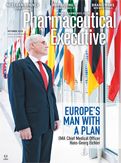Competitive Trial Management: Winning with Clinical Studies
Pharmaceutical Executive
For years, many companies have competed to demonstrate that their products could achieve the holy grail in type 2 diabetes (T2D): cardiovascular (CV) risk reduction. According to the American Diabetes Association, pharma companies to date have spent over $2 billion and tested 138,000 patients in company-sponsored CV-risk reduction T2D trials, including the recent large-scale TECOS, SAVOR, EXAMINE, and ELIXA studies.
For years, many companies have competed to demonstrate that their products could achieve the holy grail in type 2 diabetes (T2D): cardiovascular (CV) risk reduction. According to the American Diabetes Association, pharma companies to date have spent over $2 billion and tested 138,000 patients in company-sponsored CV-risk reduction T2D trials, including the recent large-scale TECOS, SAVOR, EXAMINE, and ELIXA studies.
Finally, however, partners Boehringer Ingelheim and Eli Lilly announced in August that their SGLT-2 inhibitor Jardiance (empagliflozin) reduced the overall risk of CV deaths by 38% in the EMPA-REG Outcome trial. This study was a long-term clinical trial investigating CV outcomes for Jardiance in more than 7,000 adults with T2D at high risk for CV events. Jardiance is the only T2D agent to have demonstrated CV-risk reduction in a dedicated cardiovascular outcomes trial, many of which have been required by the FDA.
The EMPA-REG Outcome trial and its unprecedented results raise important questions for a myriad of stakeholders, including regulators, clinicians, patients, payers, professional associations, and pharma competitors. For example, how might regulatory authorities change the product label? How will this trial change physician prescribing and patient use? Will BI/Lilly be able leverage this study to differentiate Jardiance from other SGLT-2 agents and diabetes products in other classes? Will payers and guideline developers change how they reimburse and recommend the product, respectively? How will competitors respond to this new data which may dramatically enhance the overall perception of Jardiance relative to its rivals?
In fact, clinical trials like EMPA-REG have developed into powerful competitive tools designed to enhance the perception and utilization of studied brands. This competitive development essentially represents the fifth role in the overall evolution of clinical studies (see chart).

Originally, pharmaceutical clinical trials had two fundamental, interdependent roles: regulatory and clinical. In the US, the 1962 Kefauver-Harris Amendment, or “Drug Efficacy Amendment” to the 1938 Federal Food, Drug, and Cosmetic Act, required that drugs demonstrate efficacy and safety to be approved for patient use. In 1966, the Fair Packaging and Labeling Act required that all drugs have specific labeling to assist doctors and patients in the clinical use of these products. Four years later, the FDA required the first patient package insert (for oral contraceptives), which contained information for patients about specific risks and benefits.
Soon thereafter, pharma companies began to leverage clinical trials for promotional purposes by seeking to highlight product details or differentiation from other products, which the FDA and other agencies over time progressively regulated. Over the past few decades, companies have been compelled or inclined to use clinical trials for reimbursement or payer purposes, as product cost-effectiveness and value have become increasingly important worldwide. Complete with their own unique and memorable brand names, clinical trials have progressed to embody battles in the larger brand wars and are now increasingly being used for competitive purposes in what can be termed “competitive trial management,” or CTM.
Competitive trial management examples
Pharma companies have leveraged CTM in a variety of ways to gain competitive advantages and steal market share:
Better: The most direct form of CTM is competitors’ head-to-head clinical trials against market leaders, almost unheard of 15 years ago. For example, over the last three years, Janssen has conducted several head-to-head studies with its SGLT-2 agent Invokana, demonstrating advantages in glucose-lowering, weight loss, and cost-effectiveness versus the market-leading oral T2D agent Januvia. Similarly, Amgen recently announced interim results demonstrating that Kyprolis helped patients with relapsed multiple myeloma live twice as long before their blood cancer worsened compared to a regimen containing rival drug Velcade.
Counter: In a 2007 head-to-head study published in The New England Journal of Medicine, the experimental anticlotting drug Effient from Daiichi Sankyo and Lilly reduced heart attacks in patients with heart disease by 24% compared with market leader Plavix from Sanofi and Bristol-Myers Squibb. However, BMS planned ahead and leveraged CTM techniques to counter a head-to-head trial. Months prior to the announcement of the trial results, BMS conducted a systematic campaign among key US market stakeholders to highlight the significantly higher bleeding risks associated with Effient, ultimately undermining the study’s and the product’s benefits.
Faster: For its new PD-1 cancer agent, Keytruda, Merck & Co. streamlined its clinical trial package and transformed a first-in-human study into a registrational study in order to beat BMS’s rival Opdivo to the US melanoma market. According to Merck’s VP of early oncology clinical research, Eric Rubin, Keytruda’s rapid development required “less than four years from the first patient that we enrolled to approval.”
Broader and higher: Not to be outdone, BMS worked collaboratively with the FDA to obtain expedited approval for Opdivo and beat Keytruda to the larger US lung cancer market months ahead of schedule. Moreover, despite its initial submission for the third-line setting in squamous-type non-small cell lung cancer, BMS leveraged two studies to obtain labeling in both second- and third-line use, a much broader competitive opportunity, and an overall survival benefit.
Bolder: At the 2014 American Society of Hematology Conference, Janssen took out a full-page advertisement showing several different studies the company was planning to conduct with its investigational multiple myeloma agent daratumumab-not the ones that the company had completed. Janssen took this step to try to create the impression that its CD38-targeting monoclonal antibody could potentially be used across different patient segments and lines of therapy.
Newer: For its investigational submental fat treatment Kybella, Kythera Biopharmaceuticals worked extensively with the FDA to create a new patient-reported outcomes assessment tool called the “Patient-Reported Submental Fat Impact Scale.” As a result of the patient survey results, the company achieved novel product labeling that includes improvements in overall patient-reported satisfaction and self-perceived visual attributes.
Gaining an edge
Here are four ways that drugmakers can win with competitive trial management:
Customized CTM workshops. For companies considering or required to conduct key studies, customized workshops or meetings with professionals from the R&D, medical affairs, marketing, and other departments can help initiate and design trials to maximize competitive advantages and opportunities.
CTM planning. Ideally, companies should start CTM planning and communications for the major studies as soon as trials-theirs or their competitors’-are planned or announced. Planners should consider three stages of planning: pre-trial, during-trial, and post-trial.
Competitive trial simulations. Competitive simulations can be designed and executed, where selected company professionals role-play their competitors and themselves to conduct scenario planning based on possible study outcomes, identify competitive trial opportunities and threats, and brainstorm innovative ways to win.
CTM training. CTM experts can teach the latest strategies and tactics for planning, preparing, and winning with clinical trials.
Stan Bernard, MD, MBA, is President of Bernard Associates, LLC, a global pharmaceutical industry competition consulting firm. He can be reached at SBernardMD@BernardAssociatesLLC.com.

FDA Grants Priority Review to Regeneron’s Eylea for Macular Edema Following Retinal Vein Occlusion
April 18th 2025Regulatory action was based on data from the Phase III QUASAR trial, which demonstrated that Eylea HD dosed every eight weeks achieved non-inferior visual acuity outcomes compared to Eylea in patients with macular edema following retinal vein occlusion.
Addressing Disparities in Psoriasis Trials: Takeda's Strategies for Inclusivity in Clinical Research
April 14th 2025LaShell Robinson, Head of Global Feasibility and Trial Equity at Takeda, speaks about the company's strategies to engage patients in underrepresented populations in its phase III psoriasis trials.
New Insights Into T Cell Exhaustion and Inflammation in Long COVID
April 17th 2025Nigel McCracken, chief operating officer, Virax Biolabs, discusses new findings that reveal altered cytokine activity and evidence of T cell exhaustion in long COVID patients, providing deeper insight into post-infection immune disruption.
Key Findings of the NIAGARA and HIMALAYA Trials
November 8th 2024In this episode of the Pharmaceutical Executive podcast, Shubh Goel, head of immuno-oncology, gastrointestinal tumors, US oncology business unit, AstraZeneca, discusses the findings of the NIAGARA trial in bladder cancer and the significance of the five-year overall survival data from the HIMALAYA trial, particularly the long-term efficacy of the STRIDE regimen for unresectable liver cancer.
Amgen’s Imdelltra Demonstrates Significant Overall Survival Improvement in Small Cell Lung Cancer
April 16th 2025In the Phase III DeLLphi-304 trial, patients with small cell lung cancer administered Imdelltra achieved a statistically significant and clinically meaningful improvement in overall survival compared to standard-of-care chemotherapy.